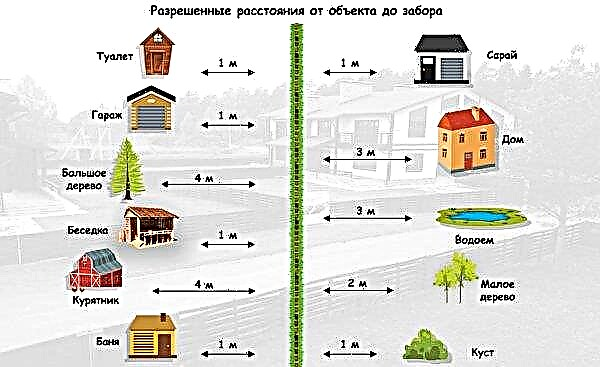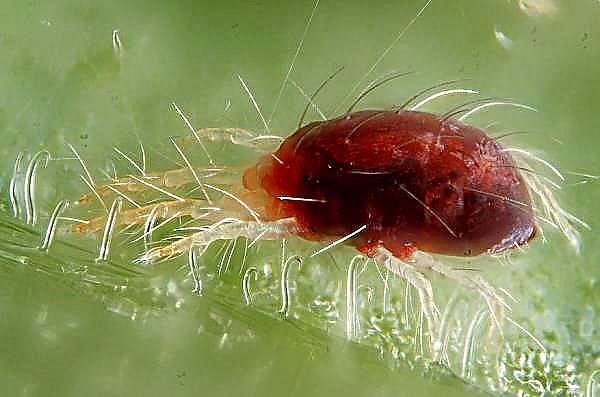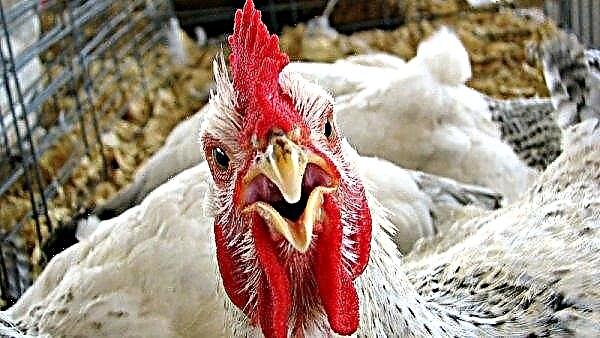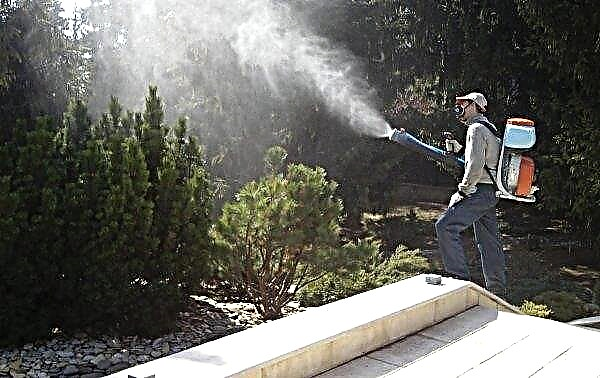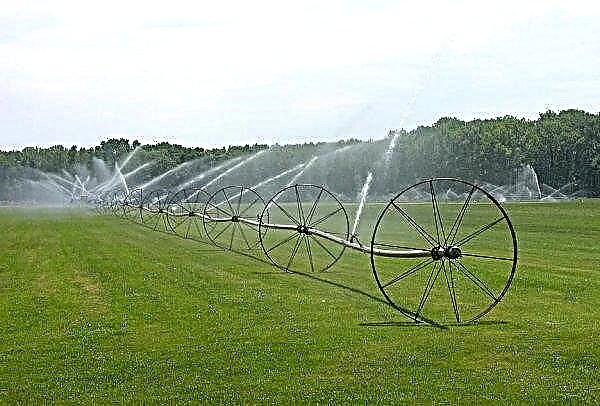Growing radishes in a greenhouse is not particularly difficult, but to obtain a quality crop, it is worth studying the information on suitable varieties and the features of their cultivation. On how to grow radishes in a greenhouse, read below.
The origin and description of the culture
In Russia, radish appeared in the XVIII century. The vegetable was introduced by Peter I. He was so fond of the inhabitants of the country that breeders began to develop new varieties adapted to the harsh climatic conditions of the northern regions. The largest contribution to the development of new varieties was made by the Grachev family: at the world exhibition of 1878, held in Paris, their greenhouse variety received 1st place.
Did you know? The closest biological relatives of radish are not only radish and turnip, but also cabbage, as well as mustard.
Greenhouse requirements
If there is plans for growing radishes in the winter, it is better to give preference to a polycarbonate greenhouse. This material has sufficient strength and is able to retain heat. For seasonal greenhouses, sheets of polycarbonate with a thickness of 5-10 mm are suitable, for year-round - 15 mm. At the stage of construction of the greenhouse, shelving should be calculated in accordance with the dimensions of the room, which are determined depending on the purpose of cultivating the radish - for your own use or for sale.
At the stage of construction of the greenhouse, shelving should be calculated in accordance with the dimensions of the room, which are determined depending on the purpose of cultivating the radish - for your own use or for sale.
Basic requirements for a greenhouse:
- the presence of an elementary ventilation system;
- the ability to control temperature and humidity;
- Sufficient area for planting care;
- the ability to supply water;
- durability and strength of the materials used;
- the possibility of organizing additional lighting.
The best varieties of radishes for the greenhouse
For cultivation in greenhouse conditions, it is better to select early varieties of radishes - they are more resistant to temperature extremes and less demanding in maintenance.
The best varieties for the greenhouse:
- Ultra early red - ripens in 20 days, not only root crops, but also leaves can be used in food.

- Firstborn - ripens in 18 days, is characterized by high productivity and resistance of fruits to cracking.

- Children - ripens in 16 days, its fruits are juicier and have a sweet taste, with almost no pungency.

- Alex - ripening takes 16–18 days, the variety is not prone to darting and lignification of the fetus.
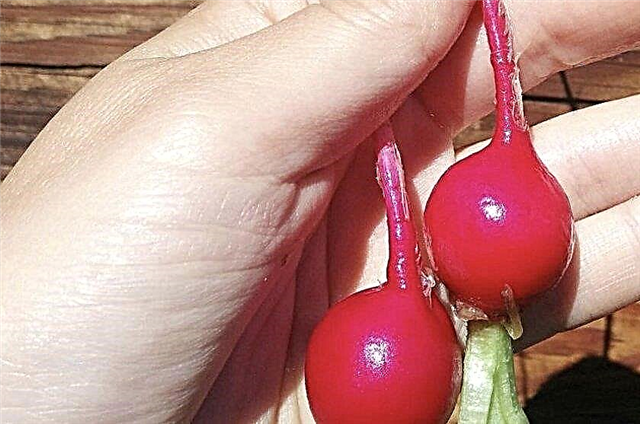
Did you know? The largest radish in the world weighed 10 kg, while traditionally the weight of the root crop did not exceed 30 g. Israeli farmer Nissan Tamir managed to grow such a fruit, and today no one has beaten this record.
Features of growing radishes in a greenhouse
Before planting radishes in a greenhouse, you need to not only choose the suitable variety, but also properly prepare it for sowing. The preparation of seeds for this procedure will vary depending on their type.
Dates of planting radishes in a greenhouse
When to plant radishes in a greenhouse depends on the availability of heating: if there is one, then you can sow seeds at any time of the year. If there is no possibility to heat the room, then planting in a polycarbonate greenhouse is carried out in March, when the temperature in it fluctuates during the day at +15 ... + 18 ° С, and at night reaches + 10 ° С. Radishes are sown in hotbeds of high-quality thick film at the end of March.
Seed selection and preparation
Today there are 4 types of radish seeds:
- inlaid;
- Hybrid
- Dragee
- varietal.

Inlaid
Seeds are processed by growth stimulants before sale and are in a protective shell. They do not need additional processing. Soaking these seeds will lead to the destruction of the protective layer, so they are sown dry.
Hybrid
This type of seed is also sown dry. They have already been treated with insecticides and fungicides, which makes them resistant to diseases and pests.
Important! Hybrids do not retain their quality indicators in the second generation, therefore, self-collected seed for secondary sowing is not used.
Dragee
This type of seed is in a shell of peat-mineral substance, providing additional protection and nutrition. Also, these seeds do not require additional processing before sowing.
Varietal
They can be assembled on their own or bought in stores. Such seeds do not undergo additional processing during production, and therefore require preparation. For processing, you can use the drug "Epin". It effectively protects against diseases, pests, helps to increase the immunity of plants to negative environmental factors. 2 drops of the solution are added to 100 ml of water and the seed is soaked for 18 hours. Instead of this drug, you can use an ash solution: 1 tablespoon is added per 100 ml of water. l powder and soak the seeds for 24 hours.
For processing, you can use the drug "Epin". It effectively protects against diseases, pests, helps to increase the immunity of plants to negative environmental factors. 2 drops of the solution are added to 100 ml of water and the seed is soaked for 18 hours. Instead of this drug, you can use an ash solution: 1 tablespoon is added per 100 ml of water. l powder and soak the seeds for 24 hours.
Preparation of soil for planting
Soil for planting is prepared ahead of time. In the autumn after harvesting, the upper 20 cm of soil is removed and replaced with a nutrient substrate, consisting of:
- humus;
- peat;
- sand;
- garden soil.
- 50 g of superphosphate;
- 10 g of potassium salt.
 For each m², 500 g of dry powder is added or added to 10 l of water and boiled for 15 minutes, and then hot is poured into the ground. When using the solution at the time of planting, the earth will retain the required percentage of moisture. 2 days after fertilizing, the earth is again loosened and leveled.
For each m², 500 g of dry powder is added or added to 10 l of water and boiled for 15 minutes, and then hot is poured into the ground. When using the solution at the time of planting, the earth will retain the required percentage of moisture. 2 days after fertilizing, the earth is again loosened and leveled.Fertilizers introduced into the soil at the time of autumn-spring preparation are enough for the entire growing season of radish. If you plan to grow the crop continuously, then before planting the next batch, it is better to fertilize the soil with a solution of manure (1:10) and treat it with Fitosporin (protection from pests, improving the quality of the soil).
Planting seeds
Before planting seeds, furrows are made on the plot at a distance of 7 cm from each other, 2 cm deep. The seed is placed at a distance of 3 cm from each other and covered with a layer of soil. Top spraying planting from the sprayer.
Features of radish care in greenhouses
After emergence, it is important to take care of the lighting. Radishes do not need too long daylight hours, 12 hours is enough. Abundant lighting is more important: if the room is quite light, then after 12 hours the radish must be pritenit.
Important! Strong shading for several days provokes the departure of radishes in the arrow.
Watering rates
Radishes need high soil moisture, otherwise the fruits will be bitter, and cavities will form quickly inside, which will significantly reduce the quality of the products. On average, irrigation is carried out every 3-4 days as the soil dries up. It is impossible to suppose the presence of root crops in dry land for even a couple of hours: their taste deteriorates from this. However, there should also not be an excess of moisture, otherwise the root crops will begin to rot. Soil moisture should be maintained within 50-60%, air - 60-70%. In the period after emergence, for 1-2 weeks, moderate watering is carried out. On average, 1 liter of liquid is consumed per m². Since the formation of the first real leaf, the irrigation intensity is increased, performing water procedures more often, and the amount of liquid is left at the same level.
In the period after emergence, for 1-2 weeks, moderate watering is carried out. On average, 1 liter of liquid is consumed per m². Since the formation of the first real leaf, the irrigation intensity is increased, performing water procedures more often, and the amount of liquid is left at the same level.
Temperature mode
Before seedlings appear, the temperature in the greenhouse must be maintained within +20 ... + 25 ° С. Then it is sharply reduced to + 6 ° C. From the moment of cotyledon sheet unfolding and until the appearance of the first present, the temperature is raised to +8 ... + 10 ° С. From the moment the first true leaf appears, a constant temperature indicator is set - +12 ... + 16 ° C.The temperature of the soil should not be lower than + 14 ° C, otherwise the root crops will freeze.
Did you know? Radishes can be consumed not only raw. In France, a gourmet soup is cooked with this vegetable and various side dishes for meat dishes are made from it.
Disease and Pest Prevention
As a prophylaxis of the appearance of diseases and pests, natural compounds and biological products are used that improve the condition of the soil and at the same time enrich it with microelements. One treatment for the entire growing season is enough. An ash solution cooled to + 15 ° C is perfect in this regard. It is used instead of watering a week after emergence. Ash can be used in dry form, spraying it on the ground part of plants and in aisles. You can also use the drug "Emochka freshness." Apply it at the time of the appearance of cotyledon leaves. To prepare a solution in 2 liters of water, add 1 drop of the substance and spray on the sheet. With the same drug, in order to prevent the spread of fungus and pests, the walls of the greenhouse are treated.
You can also use the drug "Emochka freshness." Apply it at the time of the appearance of cotyledon leaves. To prepare a solution in 2 liters of water, add 1 drop of the substance and spray on the sheet. With the same drug, in order to prevent the spread of fungus and pests, the walls of the greenhouse are treated.
After each watering, the soil in the row-spacings is neatly loosened to a depth of 10 cm. It is rational to mulch the row-spacings with compost - this will create obstacles to pests and help maintain moisture in the soil. Immediately after watering, you need to arrange ventilation for 15-25 minutes.
Harvesting and storage methods
Harvesting with the harvest is not worth it. After the ripening period specified by the manufacturer, you must first tear out one root crop and see if it has reached maturity. If the fruit is not ripe enough, you should wait another 3-4 days. Radish usually ripens together, so it is harvested all at once. Before harvesting in the morning, radishes are abundantly watered, and at lunch they are torn by hand. For further storage, you need to carry out the correct processing of the fruit. First they need to be freed from the tops. The cut is best done 1 cm higher than the root crop itself. After that, the tops are left for mulch, and the fruits are immersed in water for 2 hours and washed from dirt. After that, the radish is dried and packaged in bags. In this form, in the refrigerator, the fruits retain their useful qualities for a month.
Before harvesting in the morning, radishes are abundantly watered, and at lunch they are torn by hand. For further storage, you need to carry out the correct processing of the fruit. First they need to be freed from the tops. The cut is best done 1 cm higher than the root crop itself. After that, the tops are left for mulch, and the fruits are immersed in water for 2 hours and washed from dirt. After that, the radish is dried and packaged in bags. In this form, in the refrigerator, the fruits retain their useful qualities for a month.
Important! Storage rates for radishes are approximate and more dependent on variety.
Useful tips gardeners
Some tips to help grow radishes in a greenhouse:
- The phase of technical ripeness of the fruit lasts 1.5–2 weeks, after which the plant throws a peduncle. Root crops must be harvested before the arrow appears.
- The seed of varietal radish retains the ability to germinate for 4–5 years.
- The formation of root crops is delayed when growing on heavy soils. To remedy the situation, cover the soil with a mixture of peat and sand (20 kg per m²).
- Radish when grown indoors is a good preceding, intermediate and crop crop.
- The culture bears fruit well on the soil, which a year before its sowing was abundantly fertilized with manure.
 Growing radishes in greenhouse conditions is a profitable activity and is not difficult. The main crop care is to ensure optimal temperature, humidity and regulation of daylight hours.
Growing radishes in greenhouse conditions is a profitable activity and is not difficult. The main crop care is to ensure optimal temperature, humidity and regulation of daylight hours.





